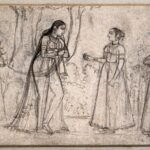Project Catalogue
- Revealing hidden truths: A Reading between the records
- Men vs. Women: Gender Disparity in the Hospitals of British India
- How Bad Ganja Be?: The Indian Hemp Drugs Commission’s Discourse on Cannabis
- When Doing Laundry Can Be Dangerous: The Social Role of Indian Women
- Dehumanisation through Documentation: The Treatment of Sex Workers in British India
- The 'Filthy' Habit
- Describing the Female: Girls, Women and Ladies
- The Politics of Medicine
- An Obscure corner of the archives: the tragic fate of Indian 'Coolie' women
- Sex and Punishment: The Legal System Imposed on Sex Workers in British India
Research Method
Drawing on The Medical History of British India records, our Digital Humanities project analyses language by making comparisons on a large scale. In order to fully utilise this vast resource of information we used AntConc, a freeware toolkit for concordancing and text analysis developed by Laurence Anthony.*
Using AntConc makes it so that we are able to ‘data-mine’ the large Medical History of British India corpus provided to us by the National Library of Scotland and are able to decipher key patterns across precisely 426 reports. Furthermore, many of us appreciate how taking a step back from the texts invites us to better connect the appearances between each other, in a way that is virtually impossible when doing close reading.
However, our processes when using AntConc are not without caveats or obstacles. To begin with, it was apparent that some information might get lost due to errors in tagging. As such, we have taken steps to ensure that our findings are representative of the texts as a whole and that the patterns found correlate to and are relevant for our academic interests. Another problem with using AntConc is that it is built to be a plain text platform, so in turn any sort of graphical material is not displayed in a user-friendly manner. In fact, many of us found AntConc quite awkward to use and thought that it is rather difficult to find out what the subject of analysis is or what exactly to start looking for. Because of this, we often relied on books and journal articles in order to help us establish our starting points.
The steps we took to get the text into analysable shape varied from one topic to the other. Some of us found that the most interesting way of ‘data-mining’ the text was to analyse the frequency of words in order to have an indication of what language is used within the reports and what can be determined from that. Others found it essential to look at how words are ‘qualified’ and subsequently come up with a semantic study of the words within the lexical field of the keywords/topics. And finally, some of us were concerned with deciphering key patterns across the large corpus, specifically by looking at the collocates and using AntConc’s Clusters/N-Gram viewer.
In addition to using AntConc to ground our research, we have also been using Carto, a cloud computing platform which provides Geographical Information System (GIS) mapping and which essentially helped us see our work come to fruition. However, the platform itself turned out to be accessible but challenging at the same time. This is due to, at least in part, how laborious and time-consuming the process of importing and cleaning our data into Carto via AntConc is. Sadly, many of us think that this process is laborious and time-consuming and goes somewhat against the DH ethos of simplifying our research processes, even if Carto did indeed provide us with a very appealing visual representation of our data.
Throughout our project, we have reflected on what this type quantitative work means to us, what it means in light of the explosive Nan Z. Da article (in which she makes a ‘computational case against computational literary studies’) and the very many reactions to it, and how it has changed our outlook as (digital) humanists. Our final conclusion is that, whereas we need to remain critical of the lack of depth or the apparent biases we have when using software such as AntConc or Carto, to do ‘distant reading’, there is no denying the value that data-mining like this can bring to our field of study and others. Furthermore, many of us have questioned how much of our work was necessarily ‘digital’ and, if so, how exactly to define it. Is it digital because the documents are digitised or is the process of finding the word patterns something inherently digital?
We have also reflected on how our present circumstances have had an impact on our qualitative work. The outset of the Covid-19 pandemic meant that we necessarily had to collaborate remotely and, in doing so, we now also have a better understanding of how the digital can be and very much was a conduit for our work as humanists.
Disclaimer: We encountered what we strongly believe to be outdated terms and therefore took the decision of changing some of the language used in the reports when it came down to analysing it in our reports.
* For a robust 10-part YouTube tutorial on how to use AntConc, albeit a slightly older version, produced by Laurence Anthony himself, click here. And for a brilliant introductory bibliography to AntConc and text analysis, put together by Heather Froehlich, click here.
Project Summary
Revealing hidden truths: A Reading between the records
By: Cherie Bradley
How best can we use the archives to reconstruct an overlooked past? The experiences of indigenous peoples of India during this period are largely omitted from the records. In this piece I analyse information from the archives to illustrate the invisible and demonstrate how we can unearth these voices. Instead of relying on the meticulous record keeping contained within the archives to understand this time, I consider the British Medical Records as a large piece within a wider puzzle.
Men vs. Women: Gender Disparity in the Hospitals of British India
This analysis focuses on the difference between the number of spaces available for men and women in the hospitals of British India. Using documents from medical centres in Mandras, Calicut, and Vizagapatam, the study contrasts the reported number of male and female beds. Additionally, I explore the reasons behind this disparity, considering factors like gender discrimination, cultural values, and economic status.
How Bad Ganja Be?: The Indian Hemp Drugs Commission’s Discourse on Cannabis
By: Andrea Mejía
The Indian Hemp Drugs Commission was created in 1893 to investigate cannabis as a cause of mental health diseases. The Commission found out this belief was based on social biases around consumers. However, documents to discard this prejudice were also the basis to support the British government's goal to tax cannabis. To show how the Commission's discourse was also based on unsustained beliefs, I carry out an analysis of the Medical History of British India documents, searching for the frequency of adjectives referring to moderation and excess.
When Doing Laundry Can Be Dangerous: The Social Role of Indian Women
Starting from the second half of the 19th century, my study analyses the changing social role of Indian women in British India in regards to medicine and its practises by looking at how they provide and consume medical care, advice and treatment whilst also pinpointing how this said role sometimes came in conflict with their socially assigned ‘domestic duties'.
Dehumanisation through Documentation: The Treatment of Sex Workers in British India
By: Friederike Gerken
Victorian Britain was infamously repressed when it came to sexuality. Nevertheless, sexually transmitted infections were rife in the military, forcing the government to address them. My analysis examines reports from hospitals that were established in an attempt to tackle sexually transmitted infections by regulating sex work. Across the documents, there are traces of dehumanisation of sex workers who were blamed for the spread of disease.
The 'Filthy' Habit
The ‘filthy’ habit refers to the special denomination employed in the records of the Medical History of British India as a classification for patients admitted at the Mental Health Institutions of that period. The language used in these files to describe behaviours and to name the patients as ‘filthy’ evidences the workings of a colonial discourse that creates differences. In this article I will analyse the way this denomination was used and reflect on the implications it had for the patients of mental hospitals.
Describing the Female: Girls, Women and Ladies
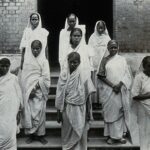
By: Luisa Gillies
How are women viewed, described and categorised in the documents of the Medical History of British India? This analysis explores the different terms used to define women, focusing on the use of 'girls', 'women', and 'ladies'. I discuss to whom each term refers to, why, and with what effects; commenting also on how descriptions of women differ from descriptions of men.
The Politics of Health
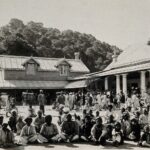
By: Rebecca Keegan
This analysis will explore the interconnectivity between politics and medicine in the India Papers collection. From the presentation of England versus India, political threats and ‘native doctors’ these aspects of the texts will demonstrate how influential the colonial agenda was on the practice of medicine at the time.
An obscure corner of the archives: the tragic fate of Indian 'Coolie' women.
By: Le Zhang
When it comes to Indian "coolie women" who left the Purdah system and worked in British colonies, how were they treated in the factory? What about their social status? How did the colonial rulers view and govern them? How did British Indian medical history record this special group? This article may help you find the answer. By extracting the documents about "coolie women" from medical history of British India and analyzing them, we may illuminate the dark corners with less dazzling candles.
Sex and Punishment: The Legal System Imposed on Sex Workers in British India
By: Héléna Lagreou
In this article I invite you through an investigation on legal wording around sex work in British Colonial India. In a Foucauldian perspective, I study how wording of punishment presents a moralisation of practices. Thus, I take sex work as a central piece of a legal power struggle between Indian woman practicing sex work and the authorities of colonial India.

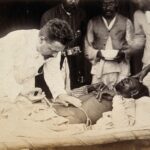
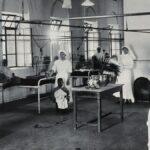


![Sassoon General Hospital, Poona, India: a queue of patients awaiting treatment. Wood engraving by [C.R.].. Credit: Wellcome Collection. Attribution 4.0 International (CC BY 4.0)](https://blogs.ed.ac.uk/digitalhumanities2020/wp-content/uploads/sites/2181/2020/12/Patient-at-hospital-in-India-150x150.jpg)


